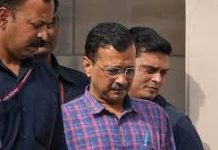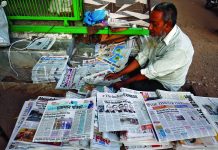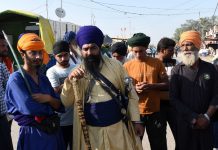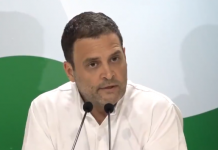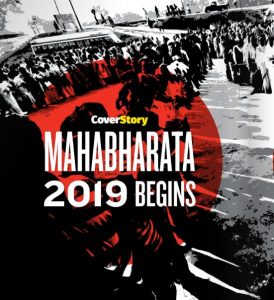 At the forefront of the opposition is Rahul Gandhi who is leading the exuberant Congress party, Akhilesh Yadav and Mayawati who have formed an alliance of Samajwadi Party and Bahujan Samaj Party with Rashtriya Lok Dal. West Bengal has Mamta Banerjee, while in other states, regional parties are waiting to play a significant role in national politics.
At the forefront of the opposition is Rahul Gandhi who is leading the exuberant Congress party, Akhilesh Yadav and Mayawati who have formed an alliance of Samajwadi Party and Bahujan Samaj Party with Rashtriya Lok Dal. West Bengal has Mamta Banerjee, while in other states, regional parties are waiting to play a significant role in national politics.
Voting for 91 constituencies in the first phase of 2019 Lok Sabha elections has already taken place in crucial states like Uttar Pradesh, Bihar, West Bengal and Andhra Pradesh that are crucial among 20 states and union territories that went to polls on April 11. The BJP facing a tough contest in all the seats due to the alliance of Samajwadi Party, Bahujan Samaj Party and Rashtriya Lok Dal. The Congress is likely to cut into votes of both the BJP and the combined alliance.
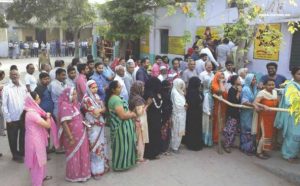 In Bengal, 18 candidates are contesting from two constituencies and the main parties are the BJP, Congress, TMC, and Left. Andhra Pradesh, still smarting over the bifurcation of Telangana, was all set for what appeared to be a tight contest for its 175 assembly seats and 25 Lok Sabha seats in the first phase. In Bihar, four Lok Sabha seats had polling. The second phase would be on April 18.
In Bengal, 18 candidates are contesting from two constituencies and the main parties are the BJP, Congress, TMC, and Left. Andhra Pradesh, still smarting over the bifurcation of Telangana, was all set for what appeared to be a tight contest for its 175 assembly seats and 25 Lok Sabha seats in the first phase. In Bihar, four Lok Sabha seats had polling. The second phase would be on April 18.
During the first phase, a man died in violence while glitches in Electronic Voting Machines were reported from several states. Sporadic violence was reported from Andhra Pradesh, where a worker of the Telugu Desam Party died after a clash in Anantapur. The Chief Election Officer of Andhra Pradesh admitted that 362 Electronic Voting Machines were malfunctioning.
The Phase 1 saw polling in Andhra Pradesh, Arunachal Pradesh, Assam, Bihar, Chhattisgarh, Jammu and Kashmir, Maharashtra, Manipur, Meghalaya, Mizoram, Nagaland, Odisha, Sikkim, Telangana, Tripura, Uttar Pradesh, Uttarakhand, West Bengal, Andaman and Lakshadweep. It witnessed polling in 25 parliamentary constituencies in Andhra Pradesh, 2 in Arunachal Pradesh, 5 in Assam, 4 in Bihar, 1 in Chhattisgarh, 2 in Jammu and Kashmir, 7 in Maharashtra, 1 in Manipur, 2 in Meghalaya, 1 in Mizoram, 1 in Nagaland, 4 in Odisha, 1 in Sikkim, 17 in Telangana, 1 in Tripura, 8 in Uttar Pradesh, 5 in Uttarakhand, 2 in West Bengal, 1 in Andaman and 1 in Lakshadweep.
Besides national parties like Bharatiya Janata Party and Congress, regional parties are also a force to reckon with. To begin with, Akhilesh Yadav’s Samajwadi Party and Mayawati’s Bahujan Samaj Party in Uttar Pradesh that has formed an alliance will prove to be a forceful third front in the state. Then there is Naveen Patnaik’s Biju Janata Dal (BJD) in Odisha and Sikkim Democratic Front (SDF) in Sikkim that has strengthened their grasp with multiple successive terms in the respective states.
On the eastern front is the formidable Mamata Banerjee’s All India Trinamool Congress (AITC) that are fighting against the ruling party, while there’s Conrad Sangma’s National People’s Party in Meghalaya and Atul Bora’s Asom Gana Parishad in Assam that has joined forces with BJP for the Lok Sabha polls. In Maharashtra, Uddhav Thackeray’s Shiv Sena is in coalition with BJP, while Sharad Pawar’s Nationalist Congress Party (NCP) will fight the ruling party. Another formidable contender in the upcoming elections is N Chandrababu Naidu and his party the Telugu Desam Party (TDP) in Andhra Pradesh. In Telangana, K Chandradshekhar Rao’s Telangana Rashtra Smithi (TRS) and Mehbooba Mufti’s People’s Democratic Party (PDP) are also forced to reckon with.
The election fever has reached its crescendo with Bharatiya Janta party, the Congress and regional parties raising the poll pitch. Some alliances have been formed and some are on the way but electioneering has already begun on a high note. It is at this time that in his blog post published on March 21, the finance minister, Arun Jaitley wrote, “I have repeatedly maintained that a fundamental difference between truth and falsehood is that truth holds together and falsehood falls apart”. To each fake campaign of the ‘Compulsive Contrarians’ over a period of time, ultimately the truth has prevailed. Either it is the electoral mandate or the judicial process which gives the final verdict.
Important UPA Ministers and leaders coined the vicious theory of ‘Hindu terror’ during the UPA Government. The ‘Compulsive Contrarians’ adopted it. It was an effort to distract attention from Jehadi terror. It was a conspiracy to give a bad name to the otherwise liberal majority community in India. On terrorism, Hindus were drawn into equivalence. Terror is alien to the Hindu culture. In fact, it’s alien to India’s legacy. We are amongst the few successful nations in the world which have managed to overcome terror and insurgency in several parts of the country. Not a single Indian has ever been arrested or killed in attempting a blast or terrorist violence across the border.
In a series of incidents across the country during UPA-1, an effort was made to invent ‘Hindu terror’. In one case, the actual terrorists were arrested. Upon rethinking by the Government, a charge-sheet was filed against a set of individuals belonging to the
Hindu community and completely contradicting the earlier investigation. In the Samjhauta Express blast, the US State Department and the United Nations kept indicating a certain Jehadi organisation and individuals responsible for the 2007 blasts at Panipat. However, it was considered by the then Government as a ‘Hindu conspiracy’. Yesterday’s verdict by the Court has judicially put the last nail in the coffin of the so-called ‘Hindu terror theory’.
Godhra train fire
The burning of the Sabarmati Express at Godhra in 2002 was an attempt to instigate social and communal tension in the State. The accused in the case were identified. There was voluminous evidence available. The accused were arrested at different points of time, charge sheeted, their bail applications were rejected right up to the Supreme Court. Many of the accused were convicted earlier and an accused arrested subsequently has recently been convicted by the trial court.
Many ‘Compulsive contrarians’ who had made a career out of creating social tensions in Gujarat started contending that the burning was self-engineered by either the State or the Kar Sevaks. In the most irresponsible act of the UPA Government, the Ministry of Railways under Shri Lalu Prasad Yadav selected, without consultation of the Chief Justice of India, a retired Supreme Court Justice, UN Banerjee, as a Commissioner for Railway Enquiry.
The Judge willing to oblige the Government and its political interest, submitted a report that there was no burning by the mob and that the fire had taken place from inside the compartment where the Hindu pilgrims were. I regard this subversion of evidence in order to cover up the heinous crime as the worst stigma on the UPA Government and its Prime Minister. Such a report had no evidential value. Yesterday, the trial court, after perusing all the evidence, has convicted one more accused.
Nirav Modi Arrest
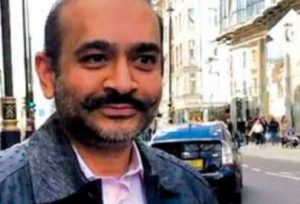 Nirav Modi started cheating the Public Sector Banks in 2011. It was a continuing crime. His crime was detected in 2018 by the. Banks and investigating agencies under the present Government. His assets have been frozen, are being auctioned, a criminal prosecution against him have been filed, recovery action for the dues owed to the banks and creditors are being pursued. He is alleged to have been escaped from one jurisdiction to another.
Nirav Modi started cheating the Public Sector Banks in 2011. It was a continuing crime. His crime was detected in 2018 by the. Banks and investigating agencies under the present Government. His assets have been frozen, are being auctioned, a criminal prosecution against him have been filed, recovery action for the dues owed to the banks and creditors are being pursued. He is alleged to have been escaped from one jurisdiction to another.
It goes to the credit of our investigating agencies that they were pursuing him. On our request, he has now been arrested and denied bail. There is a strong unanswerable case against him and hopefully, India will get him back. Whoever cheats India and its institutions cannot get away. He will be found out. This also busts the fake campaign that the present Government had anything to do with him.
There is an inherent danger in relying only on fake issues. They crack up and collapse as three of them did yesterday. I hope the manufacturers’ of fake campaign learns some lesson. They don’t seem to be considering their brazen attitude.
In another blog post, Arun Jaitley wrote that conventional print media followed conservative norms. Every ‘news’ that a reporter brought was checked and verified. Due care and caution was taken. Documents were perused, alternative versions were taken and then a ‘news’ which cast aspersions against individuals, was published. Television liberalised this conventional view. The race for TRPs has led to every news becoming a ‘Breaking News.’
Today there is a complete breakdown of ‘Breaking News.’ The social media has discarded these norms altogether. For many in social media, this rule has been abandoned. They believe that norms have become anachronic. Defamation is a right and the ‘targets’ reputation is irrelevant. If the right to publish is a part of free speech, equally the right to live with honour and reputation is an essential ingredient of the Right to Life. Both are Fundamental Rights. One cannot override the other.
Experiments with falsehood
An experiment with falsehood was attempted in the Godhra train burning case. A ‘fire from within’ theory was created. In the Ishrat Jahan case, a successful operation against Lashkar-e-Taiba module mastermind by the intelligence and security agencies was passed on as a political operation. These were the precedents that ‘caravans’ of modern-day falsehood seek to follow.
They now get ample support from ‘falsehood perpetrators’ from the ‘Liars on the Wires’ and the digital. Their bread and butter depend on falsehood. The campaign in the Vijay Mallya and Nirav Modi cases, Rafale and the non-existent loan waivers are prime examples of this in recent days. Jaitley wrote that he was personally saddened when a media organisation which had come out with distinction in Bofors investigations, became a perpetrator of the Rafale falsehood.
From falsehood to forgery
It is evident from media reports that politicians, amongst others, who stocked and distributed unauthorized cash have also been targeted in the campaign against black money. Media had reported that it was a search on a Congress leader which has found detailed notings in his diary. The diary, amongst others, entails the payments made to members of the preferred family of the Congress Party.
A search on another Congress leader at multiple places made significant revelations. Media reports indicate that his informal accounts dealing with cash were discovered. During the search, as per CBDT statement, photocopies of loose sheets were provided by the Congress leader claiming this to be BSY’s diary.
The authorities, as per the statement of the CBDT, go to the root of the matter. BSY played it fair and straight. He offered his handwriting and signatures to the authorities for verification. The Congress leader started distancing himself from the documents. He would not authenticate nor confirm its veracity and not part with the original. The documents appear to be a self-serving forgery of the Congress Party and its leader.
Faced with odds on a daily basis, the Congress Party needed to distract from the self-goal created by Sam Pitroda. He had questioned the Air Force’s targeted attack at Balakot. The ‘caravan’ of falsehood was ready for a ‘Rahul Bailout’.
The forged and fabricated photocopies manufactured and provided by the Congress Party were passed off as BSY’s diary. A channel which claims to have earned the ‘trust with viewers’ endorsed the falsehood. The newspaper which earned credibility with Bofors and lost it with Rafale, headlined the forgeries. Earlier it had sliced and half printed a Rafale document.
Falsehood and forgeries can never influence a poll. Just as voters are wiser than politicians, they are also wiser than those who ride on the ‘caravan’ of falsehood and forgeries.
 Arun Jaitley questioned, “Is the Congress Party Now Paying the Cost for its Dynastic Character?” He said that had consistently held the view that dynasties owning political parties is an unfortunate phenomenon which has accelerated in the last three decades. The Congress was the original creator of this concept. Dynasties demolish organisational structures. They are unable to attract leaders of talent or mass following. Since the democratic structure of a dynastic party gets diminished, they become a crowd around a family.
Arun Jaitley questioned, “Is the Congress Party Now Paying the Cost for its Dynastic Character?” He said that had consistently held the view that dynasties owning political parties is an unfortunate phenomenon which has accelerated in the last three decades. The Congress was the original creator of this concept. Dynasties demolish organisational structures. They are unable to attract leaders of talent or mass following. Since the democratic structure of a dynastic party gets diminished, they become a crowd around a family.
Chaudhary Charan Singh had very appropriately said that world over parties elect leaders. In India, leaders create parties. Wherever the leader goes, the party travels with him.
Dynastic parties have one major drawback. If the current generation of the party is competent, charismatic and enjoys popular confidence, the dynasty can pull-off major victories. There is an incentive in the party to rally behind him. However, if the current generation dynast is lacking in charisma, understanding and popular confidence, the crowd around the family gets increasingly frustrated. Is the Congress Party witnessing that?
The state of the Congress
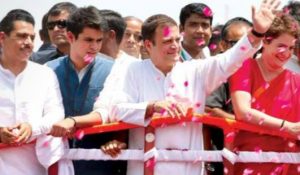 The Congress Party has been out of power for five years. Its leaders and workers are accustomed to existing with the frills of office. They stare at another possible defeat. They have to live with their leader not relying on political advisors but on some from ‘non-conventional’ ones who are out of sync with the Congress leaders.
The Congress Party has been out of power for five years. Its leaders and workers are accustomed to existing with the frills of office. They stare at another possible defeat. They have to live with their leader not relying on political advisors but on some from ‘non-conventional’ ones who are out of sync with the Congress leaders.
Since the last word on any issue belongs to the leader, there is an element of unpredictability. For those familiar with the Congress leaders, some generic statements are frequently heard. A few illustrative ones are mentioned here:
“What can I do? He just doesn’t listen.”
“Wait for the 24th of May, our politics will begin thereafter.”
“I feel like quitting”
“Our campaign planning is lagging behind. I am told Uncle Sam has come to take care of it.”
“Let’s prepare 2024”
The above reflects what one generation of the dynasty can do to a dynastic party. There are three prominent non-dynastic parties in India. The BJP has elected, over the last few decades, leaders of the caliber of Atal Bihari Vajpayee, L.K. Advani, and Narendra Modi as its front rank leaders. When the new generation of the Left took over, their dominant faces were men like Prakash Karat and Sitaram Yechury.
Despite the limited impact of the Left, they had decades of experience and ideological clarity. After a series of splits and mergers, the Janata Dal (United), another non-dynastic party, elected Nitish Kumar, who will shortly be completing his third term in his office as Chief Minister. It goes to his credit that he changed the governance culture of Bihar.
Wrongly assessing capacity
Dynasties impose leaders. These leaders don’t become great – greatness is thrust on them. Some suffer from what psychologists now regard as the ‘Dunning-Kruger effect.’ Social psychologists Dr. David Dunning and Justin Kruger have given an apt description. They believe that those who suffer from this effect have a bias of illusory superiority which comes from the inability of low-ability people to recognise their lack of ability. Without the self-awareness of their limitations, such low ability people cannot objectively evaluate their own competence or incompetence. This leads to their miscalculation in their assessment of the caliber of highly incompetent ones. They suggest that poor performers are not in a position to recognise their shortcomings and consequently are insecure and biased against the more competent ones. There is little place for men of high caliber in dynastic parties. An insecure leader is scared of the shadow of more talented people.
Is this the reason for the current mood within the Congress Party? Or is it also the reason which persuades the Congress President to cross the line of decency and dignity when he refers to the Prime Minister? This should suffice as a lesson for the dynastic parties. They succeed on the strength of some generations of the dynasty. They sink with the others.
Candidates’ analysis
Assistant Professor of Political Science and Co-Director, Trivedi Centre for Political Data, Ashoka University has analyzed the scenario few weeks ahead of the first phase of polling, as both national parties have declared most or half of their candidates. The BJP has already announced 296 candidates (excluding one independent candidate that it supports), against 218 candidates announced by the Congress.
The BJP’s first list of candidates includes 150 re-running candidates, including 128 sitting MPs.The other 146 candidates are new, including 34 candidates in seats the BJP did not contest in 2014 (mostly in Andhra Pradesh). Contrary to expectations, only 44 MPs are not re-running, , including in five seats given to the JD(U) as part of the alliance agreement in Bihar and including one seat where no by-election took place after the incumbent, Bhola Singh, passed away.
A few veterans, such as LK Advani, Bandaru Dattatreya, Karya Munda and Shanta Kumar, have been left out. The BJP has re-nominated several sitting MPs in Bihar, Uttar Pradesh, Rajasthan, Maharashtra and Karnataka, while most candidates who ran in states where the BJP did not perform in 2014 have been changed.
The Congress, on the other hand, is fielding mostly new faces. It has so far nominated 150 new candidates, including 11 in seats it did not contest in 2014. Only 68 Congress candidates who ran in 2014 are contesting, including 22 incumbent MPs. Eight MPs are currently out, including KV Thomas and KC Venugopal in Kerala, and Mausam Noor in West Bengal. The Congress has thoroughly reshuffled its decks in Andhra Pradesh, Kerala, Maharashtra, and Uttar Pradesh.
While we are yet to have complete lists, the trend so far gives a relevant indication as far as women and Muslims representation is concerned.
Space for Women
Both parties have a history of paying lip service to the cause of women representation. In 2014, the BJP fielded only 38 women candidates (8.9 per cent of all candidates), against 60 for Congress (12.9 per cent of all candidates). So far, the BJP has given 36 tickets to women candidates (12.2 per cent), against 26 tickets given by Congress (11.9 per cent). The BJP is doing better than it did in 2014 and the Congress worse, if one considers their report card in 2014, either generally, or within the exact same seats.
Twelve women BJP candidates are re-running incumbents, among whom are Poonam Mahajan, president of the BJP’syouth wing; Heena Gavit, the current Lok Sabha’s youngest member; Pritam Munde; and Hema Malini.
Fourteen BJP women contestants belong to political families.Five of them are contesting in Maharashtra: Poonam Mahajan is the daughter of the late Pramod Mahajan, Pritam Munde is the daughter of former BJP leader Gopinath Munde, Heena Gavit is the daughter of a prominent ex-NCP politician, Raksha Nikhil Khadse is the daughter-in-law of BJP leader Eknath Khadse, and Kanchan Rahul Kul is the wife of Rahul Kul, a turncoat MLA in Daund, a seat previously held by her mother-in-law.
In Andhra Pradesh, DK Aruna, who is to contest from Mahbubnagar, belongs to an expansive political family. Bangaru Shruthi in Nagarkurnool is the daughter of former BJP president Bangaru Laxman.
In Uttarakhand, Mala Rajya Laxmi, the incumbent MP from Tehri Garhwal, is the wife of the Maharaja of Tehri Garhwal and daughter-in-law of Manabendra Shah, who is an eight-time former MP from the same constituency. In Odisha, Anita Priyadarshni is the daughter of Ramakrushna Patnaik,a former minister in Naveen Patnaik’s cabinet. In Uttar Pradesh, Sanghamitra Maurya is the daughter of Swami Prasad Maurya, current MLA from Padrauna.
In Gujarat, Poonamben Hematbhai is the daughter of a four-time MLA. In Madhya Pradesh, Himadri Singh belongs to an extensive political family that includes two MPs.
Other women contestants come with strong local political experience. In Assam, Queen Ojha is a former mayor and former Asom Gana Parishad candidate of the 2011 state elections. In Sarguja, Chhattisgarh,
Renuka Singh is a former MLA and a well-known tribal leader. She served as woman and child development minister in the Raman Singh government. Also in Chhattisgarh, Gomti Sai is a tribal leader and first-time contestant. Both candidates in Trithala (Kerala) and Raiganj (Bengal) are former contestants. Other women candidates include Locket Chatterjee, a classical dancer and an actress, president of the BJP women’s wing in West Bengal.
The Congress, which has pledged to pass the Women’s Reservation Bill if it comes back to power, does not seem in a hurry to make gender equality a reality. Eight women candidates are re-running contestants, including Sonia Gandhi, Priya Dutt, Sushmita Dev, S Jothimani, Deepa Dasmunsi, Meenakshi Natarajan and Annu Tandon. One re-running candidate, Savitribai Phule, is a BJP turncoat.
Thirteen of them belong to political families. Sushmita Dev, president of the All India Mahila Congress, is the daughter of veteran Congress leader Santosh Mohan Dev, former MP and Cabinet minister. Her mother, Bithika Dev, is the Silchar MLA in Assam. Shruthi Devi is the daughter of former TDP Union minister V Kishore Chandra Deo. Dolly Sharma in Ghaziabad is the daughter of the local Congress chief; ManjariRahi, running in Misrikh (UP) is the daughter-in-law of former Congress MP and Union minister Ram Lal Rahi. Deeepa Dasmunsi, contesting from Raiganj is the wife of former Union minister and Congress stalwart from Bengal Priya Ranjan Dasmunsi. Shruthi Devi is the daughter of former Union minister V Kishore Chandra Deo (TDP).
Not all Congress women candidates hail from an affluent backgrounds. Remya Haridas, in Alathur, is the daughter of a daily wage labourer. Several non-dynastic candidates also possess prior political experience. Shamimol Usman is a former secretary of the All India Congress Committee. Kaisar Jahan is a former BSP MP, Omvati Devi is a former SP MP from Nagina.
Muslim candidates
In 2014, the Congress distributed 32 tickets to Muslim candidates (6.9 per cent of all candidates), against seven for the BJP (1.2 per cent of all candidates). So far, the Congress has fielded 18 Muslim candidates, mostly in UP (8), Andhra Pradesh (4) and West Bengal (3). The BJP, on the other hand, has given only six tickets to Muslim candidates, three in Kashmir and one in Andhra Pradesh, West Bengal and Lakshadweep each. An initial glance indicates that the BJP Muslim candidates come with far less experience and political credentials.
In J&K, Mohammad Maqbool War is a former candidate. He ran in the 2008 state election in Sopore as an independent and in the 2014 state elections in Langate on a BJP ticket. In these elections, he finished 22nd and 10th, with 93 and 523 votes respectively. Sofi Youssuf is a four-time BJP candidate in state elections from Anantnag. He ended in the fourth position on three occasions.He also ran in the 2004 general elections, again in Anantnag, finishing fourth with less than 5,000 votes.
Khalid Jahangir is a journalist and political strategist, appointed as a local BJP spokesperson in 2014. This is his first election. Jatothu Hussain Naik is a former BJP MLA candidate in Mahbubabad in 2018, where he finished third. In Lakshadweep, the BJP appointed Abduyl Khader Haji as chief of the local party unit in 2017.
In West Bengal however, Mafuja Khatun is a former MLA, and a Communist Party of India (Marxist) turncoat. By comparison, Congress’s Muslim candidates have more experience. Seven of them belong to prominent political families, such as Imran Masood, Zafar Ali Naqvi, Saleem Iqbal Sherwani and Salman Khursheed.
In Bijnor, the Congress has fielded Naseemuddin Siddiqui, former number two in Mayawati’s Cabinet. Kaisar Jahan is also a former BSP UP minister. In West Bengal, Abu Hasem Khan Chowdhury, in Maldaha Dakshin,is the only incumbent Muslim MP to re-run . In Maldaha Uttar, the incumbent MP Mausam Noor, who has defected to Trinamool Congress,has been replaced by Isha Khan Chowdhury, the current MLA from Sujapur and member of a prominent political family.
Abu Hena, candidate in Murshidabad, is a five-time MLA from Lalgola and a former West Bengal minister.In the South, the Congress is fielding Sheikh Mastan Vali, current MLA from Guntur East. In Alapuzha, Kerala, the incumbent MP KC Venugopal has been replaced by Shanimol Usman, a former AICC Secretary. Only Mohd Shahjahan Basha, in Rajampet, is a newcomer.
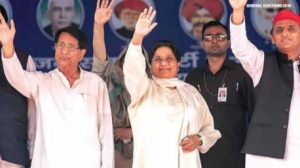 This is still a preliminary picture of the candidature landscape. What can be said so far is that the BJP, contrary to claims made, largely clings onto its sitting MPs, while reshuffling candidates in states where it hopes to expand. The Congress is fielding a larger proportion of fresh faces, which you would expect from a party who was soundly defeated in the previous election. So far, the situation of women representation is disappointing and both parties are mostly going for conventional candidates. The reality remains that most candidates (and many representatives) are expendable to parties, which does not encourage them to invest in their legislative job when they get elected.
This is still a preliminary picture of the candidature landscape. What can be said so far is that the BJP, contrary to claims made, largely clings onto its sitting MPs, while reshuffling candidates in states where it hopes to expand. The Congress is fielding a larger proportion of fresh faces, which you would expect from a party who was soundly defeated in the previous election. So far, the situation of women representation is disappointing and both parties are mostly going for conventional candidates. The reality remains that most candidates (and many representatives) are expendable to parties, which does not encourage them to invest in their legislative job when they get elected.
BJP campaign stronger
As the election nears, the Bharatiya Janata Party (BJP) launched a concerted attack on the Opposition at over 200 rallies across the country as part of a mega opening to the party’s 2019 election campaign, focus on national security and the NDA government’s welfare schemes over the past five years.
BJP president Amit Shah, foreign minister Sushma Swaraj, home minister Rajnath Singh, defence minister Nirmala Sitharaman, road transport and highways minister Nitin Gadkari, and railways minister Piyush Goyal, among other heavyweights, hit the ground running in the first leg of the blitzkrieg comprising over 450 rallies.
Shah said “There used to be two countries, the US and Israel, which were known for avenging its soldiers. Now India has become the third country to do so under Modi…Only Modi can ensure the country’s security.” He went on to target the Opposition over what he said was the absence of a prime ministerial candidate. “No one is willing to fight the elections. BSP leader Mayawati wants Narendra Modi defeated, but she is not willing to fight elections. Neither is NCP leader Sharad Pawar, West Bengal CM and Trinamool Congress leader Mamata Banerjee or DMK leader MK Stalin.” In his parliamentary constituency Lucknow, home minister Rajnath Singh, too, spoke of India’s action against the JeM, which claimed the Pulwama attack. “The irony is that there are some political parties in the country which are more worried about the surgical strikes than Pakistan. They are even asking how many persons were killed in the air strike.”
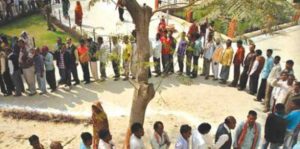 Uttar Pradesh chief minister Yogi Adityanath kicked off his campaign by offering prayers at a temple in Behat constituency of Saharanpur.
Uttar Pradesh chief minister Yogi Adityanath kicked off his campaign by offering prayers at a temple in Behat constituency of Saharanpur.
Congress attack
While BJP is attacking Congress, from the Congress, a scathing attack came from K.C.Venuguipal, General Secretary, AICC alleged that ‘The Yedduyrappa Diary’ which supposedly bears the signature of BCC, who said in a statement that S.Yeddyurappa, senior BJP leader and former CM of Karnataka indicates massive corruption of Rs. 1800 crore involving top BJP leaders needs to be investigated as the details mentioned in the diary reveals the fake claim of Modi government’s fight against corruption, AICC General Secretary in-charge of Organisation and Karnataka, K.C.Venugopal MP said in his statement.
“The Prime Minister who boasts about his fight against corruption should come forward and clarify on the content of this diary. Prime Minister, Modi must reveal whether the top leaders of BJP have received the said amount or not. It is also the responsibility of each leader mentioned in this diary to come forward and clarify whether they have received the amount mentioned by Shri Yedyurappa and undergo any investigation required in this matter. We appeal that this must be made the first case to be investigated by the newly appointed Lokpal,” K.C.Venugopal said in his statement.
Earlier also Yeddyurappa had been caught red handed while offering money to the MLAs in Karnataka to topple the Government. If the details mentioned in the Diary are correct, then the BJP leadership should also answer on the source of this income.
Former Union Minister, Kapil Sibal alleged that BJP’s five years had been a dismal period as 6351 farmers/cultivatorscommitted suicide in 2016- 17 per day. Similarly, farmer protests have increased from 628 (2014) to 4837 (2016), agriculture workers wages has increased by only 2.6 per cent (UPA-8.5 per cent) while 52 per cent farming families indebted; average outstanding loan -1 lakh. During July and December, 2018 MSP increase merely covers input costs; way below Swaminathan commission recommendations.
Between 2010 and January 2019 about 123 cases of cow-related violence. Over 50 per cent of the victims and 78 per cent of those killed were from Minorities. 98 per cent of these crimes took place after 2014 and in 14 states ruled by BJP. In 2018 there were 218 hate crimes. 192 of those were against Dalits and Minorities (Amnesty International Report). He alleged that countless citizens suffered due to Demonetisation, many lost their lives and thousands of small businesses had to close down. Sowing of crops delayed; demand collapsed; impacted farmer’s income and GDP took a hit of close to 2 per cent in the quarter of demonetisation. There were 15 lakh job losses in the first four months after demonetization (CMIE). Then the multiple GST rates regime one of the most complex in the world. Single Rate-49 countries; Two Rates- 28 countries; Five rates – 4 countries.
About killing of security personnel, Kapil Sibal gave details that in Kathua — March, 2015,(Casualties:3Security Personnel), Gurdaspur — July, 2015, (Casualties: 5 Security Personnel), Pathankot– January 2016, (Casulaties: 9 Security Personnel), Pampore– June and December, 2016 (Casualties: 11 Security Personnel), Uri — September 2016, (Casualties: 18 Security Personnel), Baramulla– October, 2016 (Casualties: 1 Security Personnel), Nagrota–November, 2016 (Casualties: 7 Security Personnel), Sunjuwan — February, 2018 (Casualties: 4 Security Personnel) and Pulawama — February, 2019 (Causalities:49 Security Personnel). More than 60 security personnel have been martyred since Pulwama attack.
Sibal alleged there are certain reports and studies that were not released for public perception including Survey on jobs created under Mudra Scheme, NSSO report on unemployment, Labour Bureau’s 6th employment-unemployment survey and National Crimes Record Bureau’s “Crime in India” report for two consecutive years. (2017 and 2018).
Tough battle ahead
In view of all this, the 2019 battle is expected to be a tough fight for both the Bharatiya Janata Party, Congress, and regional parties because 2019 is not 2014. It’s not going to be an easy ride for the BJP as the saffron party looks for the second term.
Also, the failure of the Opposition to join hands and form a “mahagathabandhan” has come as a shot in the arm for BJP. Surprisingly, in 2014, the BJP-led NDA was a conglomerate of around 29 parties; this time it has 41 parties, brought together by the Modi-Shah combine. Ironically, the Congress has an alliance with only 17 parties but BJP has been able to believe all that sole idea of “mahagathbandan” is to corner lone man Modi.
The Pulwama terror attack and the following Balakot airstrikes though have changed the narrative from the issues that the opposition was raised to “rashtarwaad” or nationalism. The Congress’ narrative ‘chowkidar chor hai’ jibe has given the BJP a new slogan ‘main bhi chowkidar’ campaign. All eyes would now be on different phases of voting and the dooms day of May 23 when results would be declared!
letters@tehelka.com



